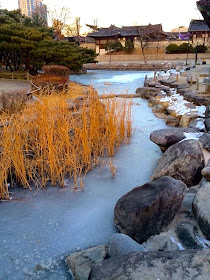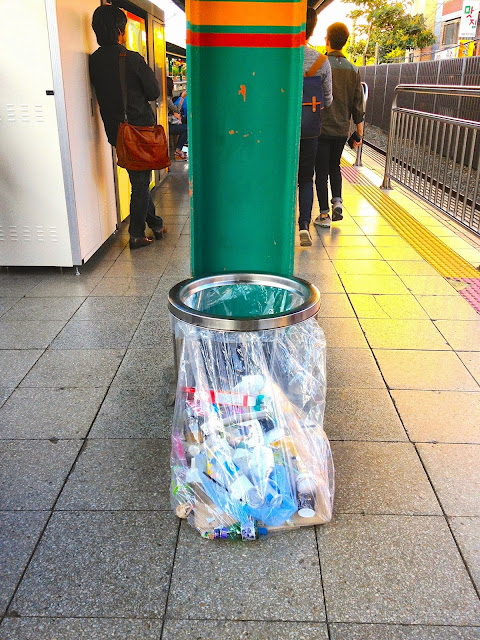1) Application and Termination
The application process and entry requirements were similar for both the universities. A minimum of a high school diploma is required for acceptance into the course, and a certificate of admission has to be obtained from the school, before applying for a student visa while still in Singapore*.
I had trouble terminating my second term at Hankuk. They tried to dissuade me from leaving while Sogang asked no questions at all.
* I had classmates from other countries who were allowed to apply for a student visa AFTER they had arrived in Seoul.
2) Cost
A term (which for some reason they call a semester) will set you back by approximately W1480K at Hankuk, and W1560 at Sogang (please check the respective websites for the exact updated cost). However, Sogang is the only university which offers a 3-hour study day at W1350 per term, with the 1-hour writing class being optional. A very good choice for those who would like to save on cost, or those who are studying Korean just to get a long-term visa.
The difference in the cost of textbooks and workbooks is negligible. A set of books for a particular level costs around W50K.
3) University Environment, Facilities, and the Surrounding Area
Hankuk University had a newer feel to it, compared to Sogang University. Both universities however, were undergoing construction to add new buildings and wings to the old structures.
Autumn at Hankuk University Of Foreign Studies
There is an Olive and Young (similar to Watsons) on the grounds of Hankuk University, whilst there is a small Bandi and Luni's bookstore on the grounds of Sogang University. Both universities have canteens with reasonably-priced food, and of course, a library and a school clinic.
The area just outside of Hankuk University comprises of shops and eateries in two long rows leading all the way to the subway station. At lunch time, I would pop by to grab a bun from the bakery, or a latte from Coffee Bean. There are also a couple of cosmetic shops and a Daiso.
The area outside Sogang University isn't as hip, comprising of traditional hole-in-the-wall eateries and greengrocers. However, the trendy and bustling streets of Sinchon and Edae are just a 15-minute walk away.
3) Classroom Environment
The classrooms at both universities are air-conditioned, but Hankuk had tried to cut down on air-conditioning costs by leaving the air-conditioner on for only an hour, then switching it off, which made the classroom horribly stuffy.
The average age of students taking the Korean Language course is within the range of 18-26, although there is the odd 16 or 40-year-old.
Hankuk adopts a U-shape seating arrangement in the classroom, whilst at Sogang, students are grouped in tables of 3 or 4, to facilitate interactive classroom activities.
Classroom layout at Hankuk University
4) Lesson Timetable
There are a total of 7 levels for the Korean Language Course. Each level spans a period of 3 months, inclusive of public and school holidays, and comprises 200 hours of lessons.
Both universities have morning and afternoon sessions, but it is not a choice for the student. At Sogang, the full 4-hour course is in the mornings, and the 3-hour course is in the afternoons. At Hankuk, levels 1 and 7 are conducted in the afternoon, while levels 2-6 are conducted in the morning.
A 4-hour day is split into an hour each of writing, reading, listening and speaking.
Both universities have a compulsory outing day per term. Hankuk's was a paid trip to Lotte World, which I skipped, whereas Sogang's was a traditional Korean knot-making class which I thoroughly enjoyed.
5) Method of Teaching
I personally prefer the teaching method at Sogang. It is much more interactive. Students are made to leave their seats and walk around the classroom, in order to practice conversing with their fellow classmates, using vocabulary and grammar that had been freshly introduced. Interactive learning takes up at least half the lesson.
There are also a lot more worksheets being handed out, for completion during the lesson, and as homework, compared to Hankuk Univerisity. At Sogang, the teachers mark the completed assignments, and demand to see the students' corrections. At Hankuk, a portion of class time is devoted to going through the previous day's homework together, with students having to mark their own work.
6) Textbooks, Workbooks and Worksheets
I find the Hankuk textbook and workbook of a higher difficulty than Sogang's.
Worksheets from Hankuk University and workbook from Sogang University
7) Examinations
The writing, reading and listening tests at Hankuk seem to be more difficult than that at Sogang. However, I found the oral exam at Sogang more intensive and gruelling, which is no surprise, given that Sogang specialises in the spoken language.
























